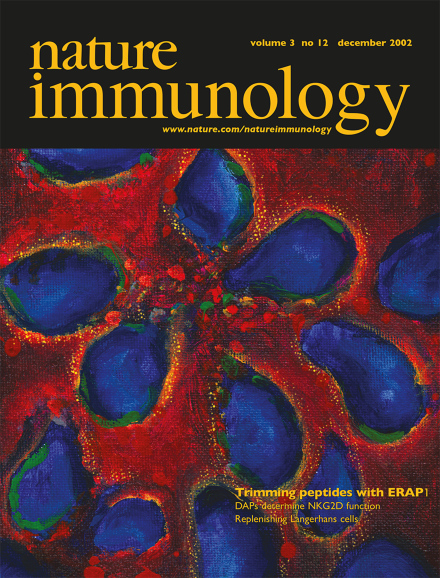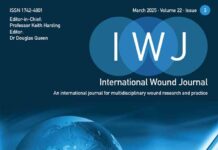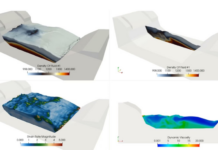Illustrative Image: Nature Immunology Paper Under Scrutiny: Addendum on Data Errors Sparks Debate Over Scientific Integrity and Accountability
Image Source & Credit: RRetractionwatch
Ownership and Usage Policy
A 23-year-old scientific paper has once again come under scrutiny after concerns were raised about irregularities in some of its figures. The article, originally published in Nature Immunology in 2002, explored the role of Langerhans cells in normal and inflamed skin. According to Clarivate’s Web of Science, it has been cited more than 770 times, underscoring its influence in immunology research.
The paper had already received a correction in 2003 to address two “incorrect” figures. However, more than two decades later, new issues surfaced when a commenter under the pseudonym “Archasia belfragei” flagged additional problems on PubPeer, a platform for post-publication peer review. The critique, posted in December, pointed out that some PCR bands in the article appeared “more similar than expected,” suggesting possible errors in how the data were presented.
In April of this year, the journal issued an addendum acknowledging “possible inadvertent errors” during the assembly of PCR measurements. Miriam Merad, the lead author and now Chair of the Department of Immunology and Immunotherapy at Mount Sinai, explained that the duplication was an “unfortunate mistake” that occurred while assembling images of PCR results. She emphasized that the issue involved housekeeping genes—baseline control genes expressed by all cells—which were not central to the study’s findings.
The research itself was carried out in the lab of Irving Weissman at Stanford University. But despite the addendum, critics argue that the notice falls short of addressing the full scope of the problem. David Sanders, a biologist at Purdue University who specializes in image analysis, described the addendum as “inadequate in multiple senses.” He noted that while the correction concerned two proteins, the questionable data involved the expression of a third protein, making the clarification incomplete.
Sanders went further, stating: “The argument that an image concerning protein expression justifies flawed RNA expression data is absurd.” In his view, the issues with the figures were serious enough to warrant a retraction rather than a simple addendum.
Merad, however, rejected that assessment, maintaining that “there was no misconduct here.” She stressed that the errors were the result of technical mistakes, not deliberate falsification or fabrication.
This case also casts light on the broader issue of scientific integrity and accountability. Errors in published work do not always stem from intentional misconduct; many are inadvertent mistakes in data handling, image preparation, or figure assembly. Nonetheless, such errors can undermine confidence in scientific publications, especially when discovered long after a paper has shaped subsequent research.
Interestingly, one of the coauthors on the 2002 Nature Immunology paper, Harvard professor Amy Wagers, has also faced similar issues in other publications. Earlier in 2025, a correction was issued for one of her papers in Nature Aging after potential image duplication was identified. The notice explained that two micrographs had been mistakenly swapped during figure preparation. Wagers did not respond to requests for comment, but her co-corresponding author, Lee Rubin of Harvard, acknowledged the mistake, saying: “We are upset that we made the mistake but feel like we rectified it quickly and openly.”
Wagers has a history of controversies around data integrity. In 2010, she retracted a paper from Nature due to data concerns. The following year, Blood retracted another of her articles after a postdoctoral researcher admitted responsibility for duplicated data and inappropriate manipulations. That researcher was subsequently dismissed.
Broader Implications
This episode highlights the tension between two key principles in science: the need for transparency and correction when errors are identified, and the responsibility to uphold the highest standards of research integrity. Journals often face difficult decisions about whether to issue corrections, addenda, or full retractions. Critics argue that insufficient responses—like minimal addenda—risk diminishing public trust in the scientific record.
The rise of post-publication review platforms such as PubPeer has empowered researchers and independent “sleuths” to scrutinize published studies years after publication. While this promotes accountability, it also raises questions about how best to address legacy errors without unfairly punishing scientists for honest mistakes.
Ultimately, the case underscores that science is a self-correcting enterprise—but the process is often messy, contentious, and highly dependent on how transparently authors and journals respond when problems are brought to light.














 The African Research (AR) Index is a comprehensive scholarly directory and database focused explicitly on journal publishers that publish and disseminate African research.
The African Research (AR) Index is a comprehensive scholarly directory and database focused explicitly on journal publishers that publish and disseminate African research.

